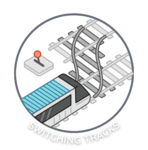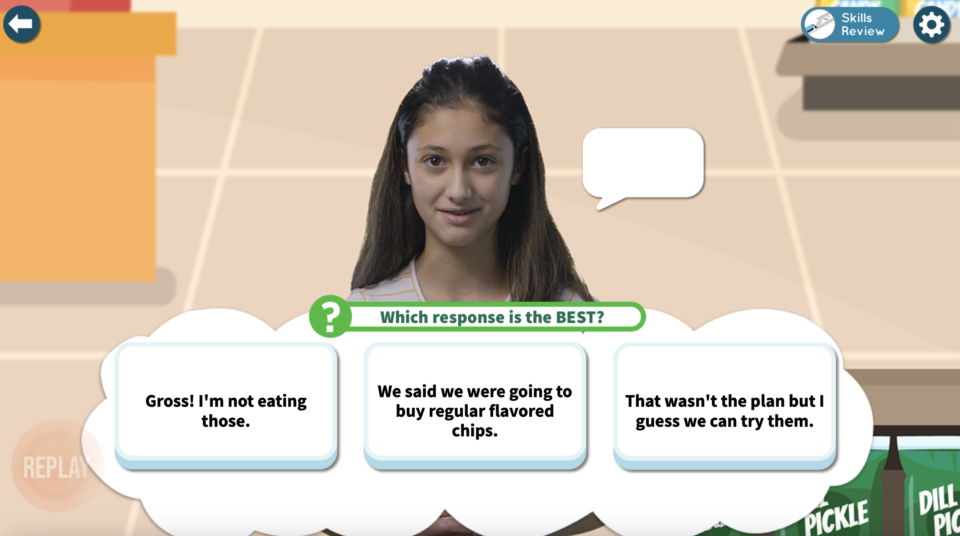
Self-regulation is a crucial skill that enables elementary students to manage their emotions, behaviors, and thoughts in a way that supports their learning and social interactions. However, teaching self-regulation, particularly the ability to “switch tracks” when a situation changes, can be challenging. Everyday Speech World, an interactive digital social learning simulation, offers a practical and engaging way to help students master this skill. In this blog post, we will explore how special education teachers can use Everyday Speech World as an interactive self-regulation practice for elementary students.
Why Self-Regulation Matters for Elementary Students
Teaching self-regulation is essential for elementary students because it:
- Enhances Emotional Control: Helps students manage their emotions, reducing outbursts and frustration.
- Improves Social Interactions: Supports positive interactions with peers by promoting thoughtful responses to social situations.
- Boosts Academic Success: Enables students to stay focused on tasks, adapt to changes, and handle challenges effectively.
- Builds Independence: Encourages students to take control of their behavior and make responsible decisions.
Interactive Self-Regulation Practice for Elementary Students
Everyday Speech World is an immersive, digital social learning simulation designed to teach a wide range of social and emotional skills. The platform uses real-life recorded same-age actors and offers scenarios where students respond in a good-better-best format. This interactive approach allows students to see the consequences of each choice they make, making it an ideal tool for teaching self-regulation, specifically the skill of Switching Tracks.

What is Switching Tracks?
Switching Tracks refers to the ability to shift one’s focus or behavior in response to a change in the environment or situation. For example, a student might need to switch tracks when transitioning from playtime to a quiet activity or when a friend suggests a new game. Mastering this skill helps students remain flexible, calm, and socially adept in various settings.
Implementing the Lesson in the Classroom
Objective
By the end of the lesson, students will understand the concept of Switching Tracks and will have practiced this skill through interactive scenarios in Everyday Speech World.
Materials Needed
- Access to Everyday Speech World on computers or tablets.
- Whiteboard and markers for group discussion.
- Reflection journals or worksheets for students.
Duration
45-60 minutes
Activity Steps
1. Introduction to Switching Tracks (10 minutes)
Begin by explaining the concept of Switching Tracks to your students. Use simple language and examples that relate to their daily experiences.
Discussion Questions:
- What does it mean to switch tracks?
- Can you think of a time when you had to change what you were doing because something else happened?
- Why is it important to be able to switch tracks?
Key Concepts to Cover:
- Flexibility: Emphasize that being flexible and adapting to changes is an important part of getting along with others and staying calm.
- Examples in Daily Life: Provide relatable examples, such as switching from playtime to classwork or changing a plan when something unexpected happens.
2. Introducing Everyday Speech World (5 minutes)
Introduce Everyday Speech World to the class. Explain that they will be participating in an interactive simulation where they will watch videos of students their age and decide how to respond in different situations. Highlight that they will see the consequences of their choices, helping them understand the best ways to switch tracks.
Overview of the Game:
- Real-Life Scenarios: Students will interact with real-life recorded actors in situations that require them to switch tracks.
- Good-Better-Best Format: For each scenario, students will choose between good, better, and best responses, learning from the outcomes of each choice.
- Interactive Learning: The game format is engaging and allows students to practice self-regulation in a safe, controlled environment.
3. Interactive Self-Regulation Practice for Elementary Students (20-25 minutes)
Have students play the Switching Tracks scenarios in Everyday Speech World. As they progress through the simulation, encourage them to think about why certain responses are better than others and how switching tracks can help them handle changes more effectively.
Example Scenario:
- Scenario: A student is playing a game when the teacher announces it’s time to clean up and start a new activity.
- Good-Better-Best Responses:
- Good: The student keeps playing for a few more seconds before starting to clean up.
- Better: The student puts the game away but grumbles about the change.
- Best: The student immediately stops playing, starts cleaning up, and asks the teacher about the new activity.
Benefits of the Game:
- Visual and Interactive Learning: Students see the immediate consequences of their choices, helping them internalize the importance of switching tracks.
- Real-Life Application: The scenarios are relatable and prepare students for similar situations in their everyday lives.
4. Group Discussion and Reflection (10 minutes)
After the gameplay, bring the class together for a group discussion. Ask students to share their experiences and what they learned about switching tracks.
Discussion Questions:
- What was the most challenging scenario you faced in the game?
- How did you decide which response was best?
- How do you think you can use what you learned in real life?
Reflection Activity:
- Provide students with reflection journals or worksheets where they can write about a situation where they needed to switch tracks and how they handled it. Encourage them to think about how they could improve their response in the future.
Unlock all of our digital games and interactive materials by signing up for your free trial today – no credit card required!
Access the full Social Communication Curriculum HERE!
Instant access to thousands of no-prep social skills activities, over 1000+ video lessons, and engaging games designed to enhance learning and development.
Conclusion
Teaching elementary students the skill of Switching Tracks is essential for their self-regulation and overall social-emotional development. Everyday Speech World offers interactive self-regulation practice for elementary students in a way that is both relatable and impactful. By implementing the strategies outlined in this blog post, elementary special education teachers can help their students develop the ability to switch tracks smoothly and confidently. For more resources and tips on teaching self-regulation, stay tuned to our blog.
Sample Video
Students learn best by watching others their same-age model the behavior! Check out a sample video modeling lesson below. We offer our entire Social-Emotional Learning platform free for 14 days here!
Related Blog Posts:
Free Elementary Problem-Solving Worksheet
Teaching Middle School Students to Stay Calm and Solve Problems
Teaching Problem-Solving Skills with Solve It: An Engaging Game for Elementary Students





